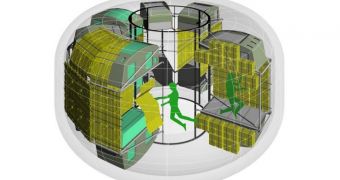The American space agency is very interested in developing a new generations of deep space habitat prototypes. These will be structures in which astronauts of the future will be able to work, at locations far away from the relative safety of low-Earth orbit.
But designing, manufacturing, assembling and testing the systems that would be required for such space structures is no easy feat. This is why NASA is now calling on college and university students to come up with new ideas and designs.
If successful and worthy, the idea may actually be incorporated in future designs NASA is currently considering. The proposals need to be submitted under the 2013 Exploration Habitat (X-Hab) Academic Innovation Challenge.
This is not the first time the agency conducts such a project. In the past, students have proposed the use of inflatable lofts for astronaut sleeping quarters, a variety of artificial greenhouse systems for growing food, as well as a number of tools to be used for handling a wide array of samples.
This year's offer is significantly more varied. Students from multiple disciplines are invited to attend, and NASA says that research options include photovoltaic solar arrays, workstations designed to support human-robotic collaboration, or telepresence and holodeck conceptual systems.
“Students will play a vital role in our critical early system planning and development. Their designs could become the basis for the concepts and technologies that will make up the habitat we eventually send to space,” explains Alvin Drew.
The expert, a NASA astronaut in his own right, holds an appointment as a habitat systems project manager at the Johnson Space Center (JSC), in Houston, which is the home of the Astronaut Corps.
“The X-Hab Challenge is part of a continuing effort to engage and retain students in science, technology, engineering and mathematics, or STEM, and provide a real-world challenge exposing them to engineering and design processes,” a NASA press release states.
“NASA will directly benefit from the development of innovative habitation-related concepts and technologies that could be applied to future missions,” the document concludes.

 14 DAY TRIAL //
14 DAY TRIAL //